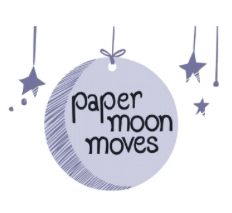Small, easy to move, and desirable – I have come to think of jewelry as the polar opposite of pianos. More often than not, when we are handling an estate with jewelry, there is someone in the family who wants to keep it. This is, by far, the best outcome for anything we handle. We love to see heirs happily accept gifts from estates.
If there isn’t anyone who wants it, jewelry can often be sold without a lot of effort. Fine jewelry – jewelry made of silver or gold or containing gems – is easy to sell. Even costume and vintage jewelry, which do not have the same inherent value, can be desirable and, therefore, sale-able.
If the jewelry can’t be sold, there are plenty of thrift shops that will happily take it as a donation. Jewelry doesn’t take up much space so shops can accept a lot of it.
Doris
Doris was a wealthy widower who died without heirs or many friends. She had a large collection of jewelry, including a ridiculously large gem that looked like a diamond but was set on a simple, cheap ring. We had a jewelry dealer meet us at the apartment to test it. She weighed it and found it to be 7.5 carats – quite sizable. Then she studied it and measured its density with a small portable device that measures the thermal conductivity of a gem.
The test appeared to show it was a genuine diamond, but as she studied the gem carefully herself, she began to have doubts about the accuracy of the device. The setting concerned her. A large expensive diamond would typically be set on a large and expensive ring. She was also concerned by the fact that the ring was kept in a jewelry box with an assortment of costume jewelry. She could not come to any final conclusions about it herself but advised us to show it to an appraiser.
We brought it to a jewelry appraiser at an auction house. He ran the same kinds of tests as the dealer but he had more equipment and better lighting and he was able to determine, with confidence, that it was real. He made an offer to buy it for $20,000. This was nice but we needed a second opinion before we agreed to a sale.
Next I took the ring to a private jeweler on Madison Avenue located a floor above a boutique clothing shop. There are no signs for the shop. You ring the buzzer just as if you are visiting a friend, and are asked to identify yourself before you are admitted upstairs. Inside, you find yourself in a huge apartment that has been converted into a private store. Jewelry cases line every inch of wall space, and the whole place glitters from the light reflecting off of gems.
The first time I had an appointment, I overheard another client ask if she could buy some “cruise” jewelry. It turns out she was looking for jewelry that was real, and nice, but not as valuable as her regular jewelry, in case it got lost or stolen during her trip. She paid $10,000 for a “cruise” bracelet.
The jeweler studied Doris’ ring carefully. He made a lot of notes and called over a colleague for a second opinion. They were also baffled by the modest setting, but they became convinced that the gem was real. Ultimately they paid Doris’ estate, close to $36,000, almost double what the auction house had offered. The Estate Executor agreed to this sale.
I don’t want readers to get lofty ideas from Doris’ story. Most of our clients have some nice pieces to sell or give away, but the values never come close to this amount. It was a once in a lifetime diamond for us.
The good news is that you have options with jewelry. If you don’t have time, you can store it somewhere safe until you can focus on selling it. Once you’re ready, there are a lot of dealers and auction houses interested in fine jewelry. Always get at least a second opinion before committing to a sale and consider hiring an appraiser if the value of the piece seems to warrant the cost of an appraisal.






